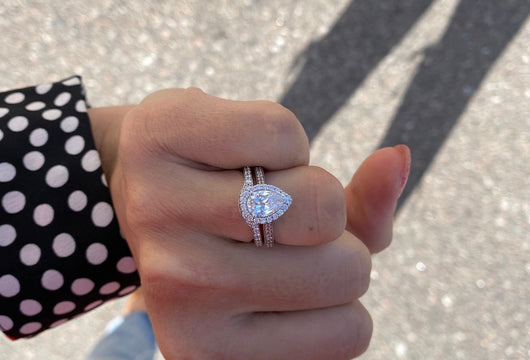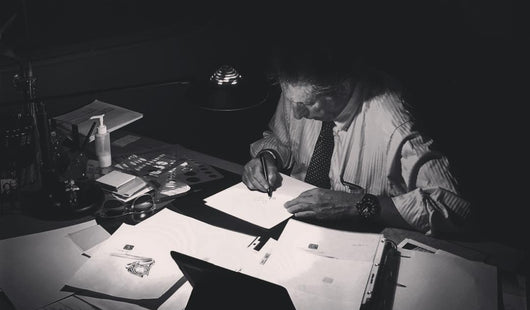Lab Diamonds — Is The Value Shifting?

Once exclusively mined from the Earth, diamonds can now be grown in dedicated laboratory environments. These lab-grown diamonds have increased in popularity and availability, and as demand has surged, prices have notably dropped. Let’s explore how lab diamonds are reshaping the jewelry market—and what this means for you.
What Determines Diamond Value?
Diamonds have long been linked with value, status, and rarity. While many associate the stones with love, anniversaries, and engagements, others wear them as stylish representations of their success. Over the centuries, diamond gemstones have held prominence as tangible symbols of the wearer’s prestige and wealth. That said, as with any other product, the actual monetary value of diamonds has fluctuated over the years due to a variety of market variables.
One of the most foundational ways to assess diamond value is through the 4Cs:
Cut: The most influential factor in a diamond’s sparkle. A well-cut diamond will reflect light more brilliantly, increasing both visual appeal and market value.
Color: Diamonds are graded on a scale from D (colorless) to Z (light yellow or brown). Colorless diamonds are rarer and generally more valuable.
Clarity: Refers to internal and external imperfections, called inclusions and blemishes. Fewer imperfections mean a more valuable diamond.
Carat Weight: Larger diamonds are rarer and often command higher prices.
Beyond the 4Cs, diamond value is impacted by supply and demand, consumer preferences, and market trends. For example, the discovery of a new natural diamond mine can increase supply and potentially lower prices. Meanwhile, changes in fashion—like a preference for oval over round diamonds—can also influence demand and price.
Diamonds are often considered a good investment because of their scarcity and enduring desirability. If you buy a natural diamond at a fair price and care for it properly, it can appreciate in value. At the bare minimum, the stone is unlikely to lose any value over time.
Lab-grown diamonds, on the other hand, are a relatively newer entry to the market. While they share the same physical and chemical properties as mined diamonds, their infinite supply makes them less rare and, therefore, less valuable.
Are Lab-Grown Diamonds a Good Investment?
As previously stated, scarcity is a huge factor that influences a product’s value. Because natural diamonds are relatively rare, they have a higher value than lab-grown diamonds, which are not in short supply. This means both their initial cost and resale value are relatively low in comparison to a gemstone mined from the earth.
What About Ethical Concerns?
While many regard lab diamonds as ethically sourced, it’s important to remember that the creation process uses a tremendous amount of energy. On the other hand, natural diamonds can be an ethical choice when you shop with the right provider.
Unfortunately, not all diamond jewelers embrace John Atencio’s unwavering ethical standards. When crafting his uniquely breathtaking natural diamond jewelry, John maintains a strict adherence to unyielding ethical and social standards. This includes sourcing his natural diamonds from reputable, eco-conscious suppliers and complying with the Kimberley Process Certification Scheme (KPCS)—a critically important worldwide effort aimed at ending the trade of “conflict diamonds.”
Lab-Grown Diamonds vs. Natural Diamonds – Buying Guide
Choosing between a lab-grown and natural diamond comes down to personal priorities. Here’s a quick comparison to help guide your decision:
Natural Diamond
-
Formed over billions of years deep within the Earth
-
More expensive due to rarity and extraction process
-
Often retains or increases in value over time
Lab-Grown Diamond
-
Created in high-tech laboratories in weeks
-
Typically 30–40% less expensive for the same quality
-
Currently has limited resale value
John Atencio offers both ethically sourced natural diamonds and lab-grown diamonds, ensuring beauty, brilliance, and peace of mind no matter your preference.

Are Lab-Grown Diamonds Valuable?
A natural diamond takes billions of years to form under intense pressure and heat miles below the Earth's surface. Lab diamonds, by contrast, are produced in a matter of weeks using specialized technology. Despite this difference in origin, both types of diamonds are chemically and optically identical—down to the molecular level. The only distinguishable feature in lab-grown diamonds is a microscopic inscription identifying its origin.
While lab diamonds look and perform like natural diamonds, their unlimited supply has impacted resale value. Over the past few years, lab-created diamonds have experienced declining resale potential, largely due to increased production and competition.
Still, it’s worth noting that natural diamonds appreciate over time, in part due to inflation and enduring demand. A diamond's uniqueness—its shape, quality, and color—also plays a role in how well it holds value. Lab-grown diamonds do not offer the same investment potential.
Price of Lab-Grown Diamonds
In recent years, lab-grown diamonds have increased in popularity—especially among millennials and Gen Z shoppers looking for affordable luxury. Interestingly, this increased demand hasn’t driven up prices. In fact, prices for lab-grown diamonds have decreased due to:
-
Higher production efficiency
-
Rapid technological advancement
-
A growing number of suppliers entering the market
For example, a 1-carat lab-grown diamond that cost $4,000 just a few years ago may now sell for closer to $1,500–$2,000, demonstrating significant depreciation over a short time.
Lab-Grown Diamond Care & Maintenance
Whether natural or lab-created, diamonds are resilient—but proper care ensures that your jewelry lasts a lifetime. These tips will help keep your diamond looking great:
Cleaning
Use a mixture of warm water and mild soap. Gently scrub with a soft-bristled toothbrush to remove dirt and oil buildup. Rinse thoroughly and pat dry with a clean, lint-free cloth.
Storage
Keep your diamond jewelry in a soft pouch or a lined jewelry box to avoid scratches. Avoid letting pieces rub against each other.
Inspections
Have your jewelry professionally inspected once a year to ensure that prongs and settings remain secure, especially for rings worn daily.
FAQs About Lab-Grown Diamonds
Q: Do lab-grown diamonds last as long as natural diamonds?
A: Yes. Lab-grown diamonds are chemically and physically identical to natural diamonds and will last just as long.
Q: Are lab-grown diamonds considered “real” diamonds?
A: Yes. They are not imitations—they are real diamonds with the same atomic structure as natural diamonds.
Q: Will the price of lab-grown diamonds continue to fall?
A: Prices have declined recently due to increased production and competition. While future prices may fluctuate, stabilization could occur as the market evolves, but there is no way to know for sure.
Q: How do I know I’m buying a quality lab-grown diamond?
A: Always buy from a reputable jeweler. John Atencio ensures that every natural and lab-grown diamond meets the highest quality standards, backed by proper certification and expert guidance.
The Real Value of Your Diamond
What exactly makes a natural diamond an investment-grade gemstone? In most instances, it’s the color, cut, clarity, and carat weight. The higher a diamond ranks in these categories, the greater its monetary value now and in the future.
Ultimately, the true value of a diamond lies in what it represents: your love story, your achievements, and your style. Whether you choose a natural or lab-grown diamond, it’s a lasting reflection of who you are.
John Atencio’s considerate experts can help you choose the perfect stone cut and carat, along with the right setting and precious metal based on your unique preferences. Shop online or make an appointment at one of John’s many convenient locations, where his consultants can guide you toward a stunning jewelry selection.


